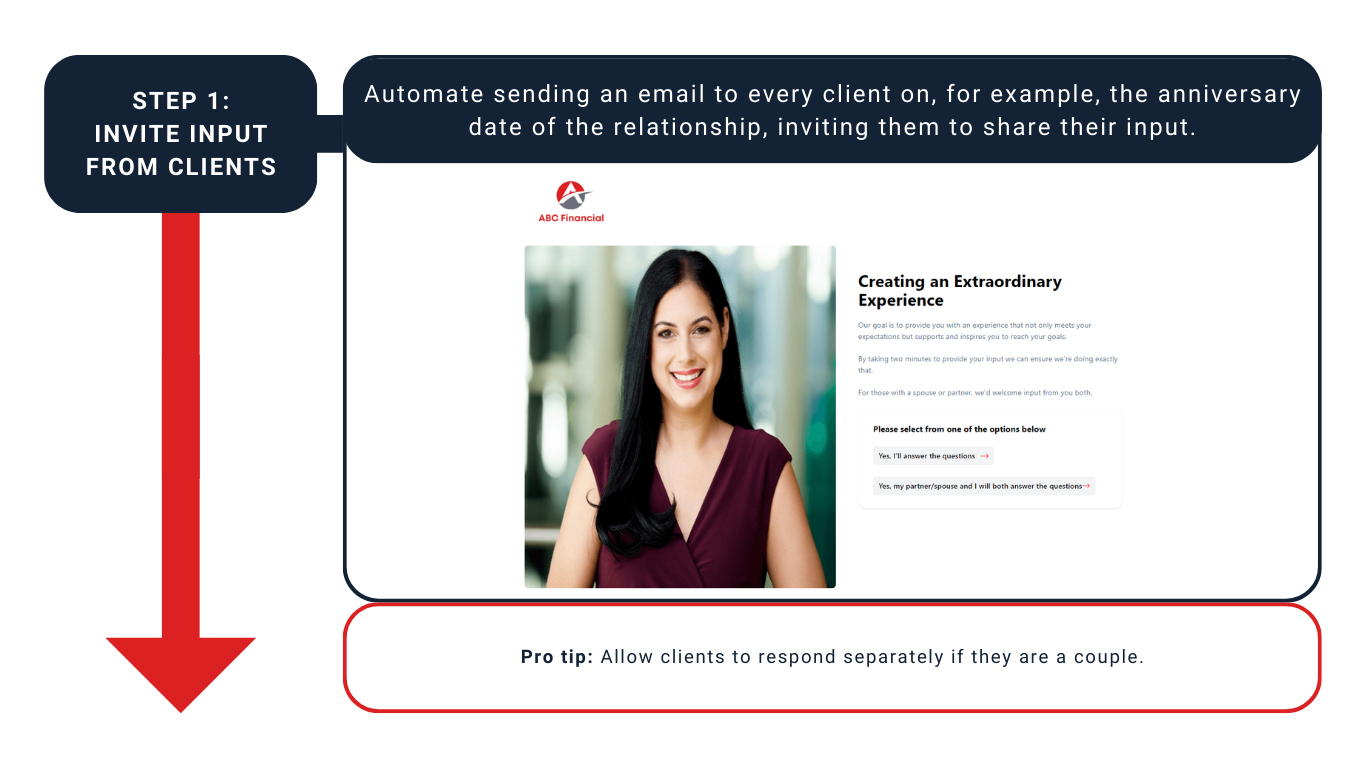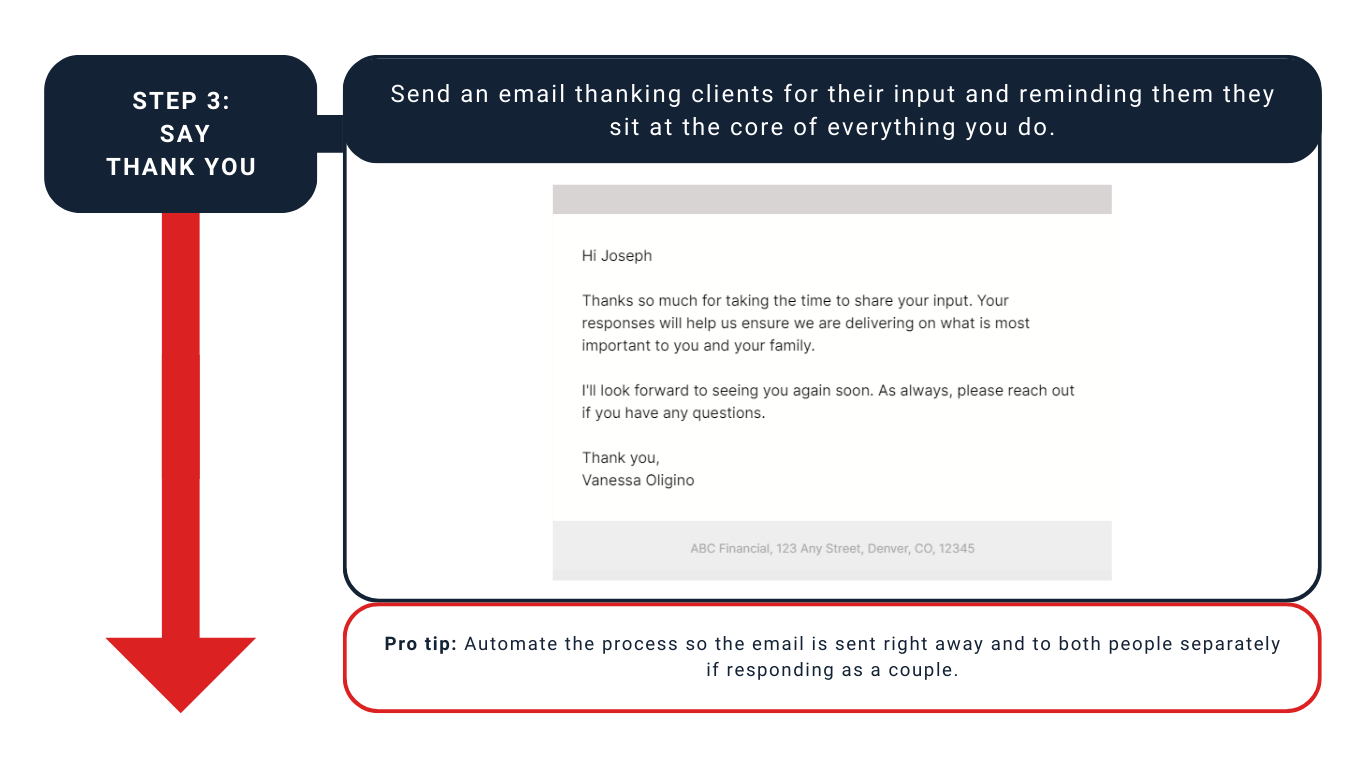Last week I suggested that we need to think about testimonials differently, flipping the focus from sharing feedback from clients to sharing stories of how clients have been impacted by working with you. This week I promised to share a tactical plan.
As a reminder, I argued that while sharing client feedback (e.g., satisfaction or Net Promoter Score ratings) is interesting, sharing client stories has a bigger impact on prospective clients. While different, both are forms of client testimonials.
Further, I argued that while much of the industry discussion has focused on how to share testimonials efficiently there is a more important ‘first question.’ Is the testimonial meaningful?
So Let’s Get Tactical...
As you consider the plan below, keep the following in mind.
- When capturing stories (or feedback) provide all clients with the ability to share their thoughts. Don’t cherry-pick.
- Track any comments or stories you choose not to share, along with a clear and valid reason (e.g., they included personally identifying information). Create a paper trail.
- Help clients better articulate their story if needed. Sometimes it may be helpful to massage the stories or comments your clients provide. Don’t worry about doing that with their permission, but do keep a record of any changes.
- Capture stories as part of a broader strategy to gather input from clients to enhance the overall experience, rather than as a one-off request for feedback to drive testimonials and reviews. The testimonial is a happy by-product of a process to deliver a great experience.
The Plan
Below is an action plan to capture great testimonials that speak to the impact you have had. I’ll draw on visual examples using our Engagement Engine to automate the process of capturing great testimonials. If you’re a ‘do it yourself’ follow the same core steps.




While we’ve invested our time in technology to make it easier to capture testimonials, we’ve seen interesting innovation designed to help you automate the process of tracking, archiving and sharing those testimonials compliantly.
Among the many tools available, three that seem to be getting traction are: Amplify Reviews, Wealthtender and Testimonial IQ. And some of the great marketing platforms, such as FMG, have tools to make all of this easier as well. For the do-it-yourselfers, there are options. For example, we use Webflow for our website and have created ‘collections’ that allow us to update certain pages in minutes.
The only caveat is that the choice of distribution tool comes second. You need to start by capturing a truly meaningful testimonial or story, and then focus on how best to track and share those easily.
The Impact
Ultimately we believe that changing the approach to testimonials and focusing on stories will have a meaningful impact on your business. Consider the following two examples. Which puts the client at the center and demonstrates your value more effectively? I vote it’s the one on the right.

Note that either of the above would need to include the relevant disclosures. This is an example only.
Related: Do Testimonials Really Work?


